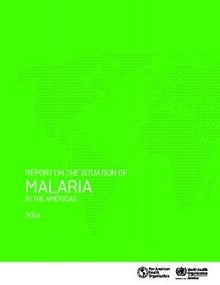Report on the Situation of Malaria in the Americas 2014 (Regional Level); 2016

|
In 1954, the countries in the Americas made the trail- blazing decision to adopt malaria eradication as a program with the Pan American Sanitary Bureau as the coordinating unit. It was a year later when the Global Program for Malaria Eradication was created and became the coordinating unit for malaria in the world. Throughout its more than a century-long effort in reducing malaria transmission, the disease has remained at the forefront of Pan American Health Organization (PAHO) member states’ concerns. In September 2016, health ministers from across the Region of the Americas adopted a new plan for malaria elimination over the next four years, urging countries to intensify the fight against the disease. The current state of malaria in the Americas has changed dramatically from the mid-fifties. The disease has been eliminated in many countries but was quick to have resurgence or increase in territories which failed to recognize the fragility of their achievements, where the improvements on social determinants remained a challenge and which continued to have receptivity for malaria. Due to reinforced global and regional malaria, commitments since the year 2000, the number of cases due to malaria has more than halved while the progress made in preventing deaths has been even more phenomenal. For the first time in over three decades, we are now able to imagine a world without malaria, with 18 countries of the Americas expressing official commitment to malaria elimination. One country is currently in the process of becoming certified for malaria elimination and at least four more are expected to follow within the next several years [...] We hope that the results presented may not only inform on the malaria situation, but inspire positive action towards achieving malaria elimination. As we move towards achieving the Sustainable Development Goals, 18 countries have declared malaria elimination as a goal either partially or throughout the entire country; others aim to further reduce malaria by 90%. The World Health Organization’s Global Technical Strategy 2016-2030 has called for efforts towards the acceleration of malaria elimination and PAHO’s Plan of Action for Malaria Elimination 2016-2020 in the Americas will further this goal. The Region of the Americas has come a long way in its efforts to curb the burden of malaria since 2000 and this could not be achieved without the persistent efforts of countries along with contributions made by various entities and organizations. To achieve elimination, however, even more resources will be needed as the present-day challenges are some of the most complex and socially sensitive. |
